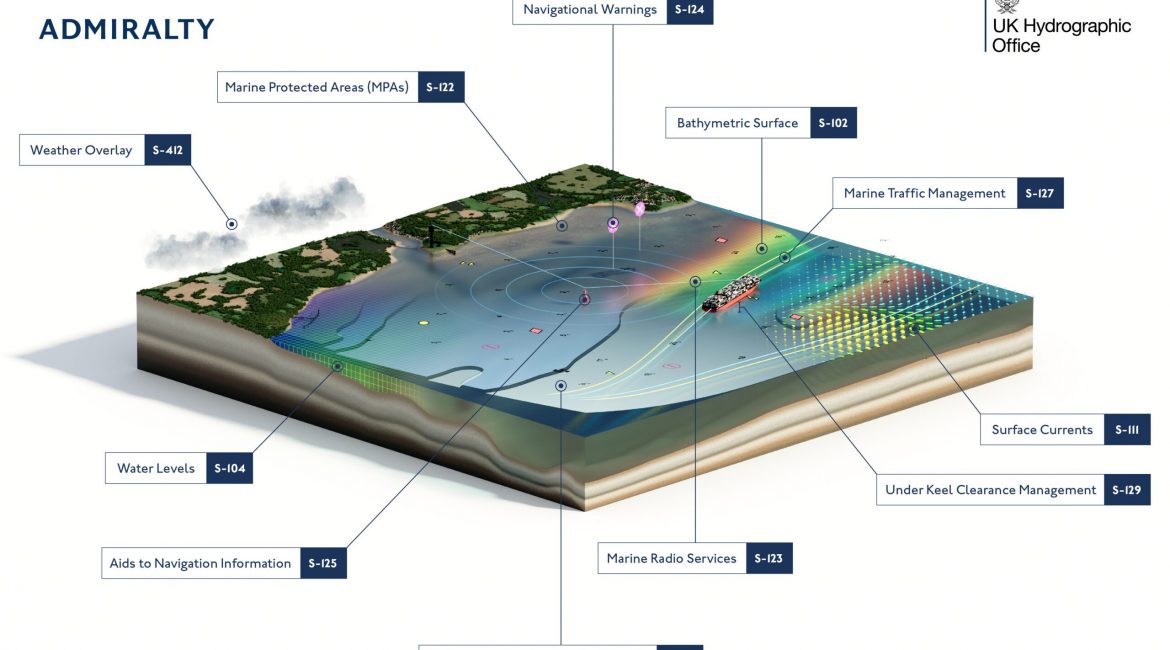The International Hydrographic Organization (IHO)’s new S-100 universal hydrographic data model promises to bring a range of benefits to the shipping industry, including improvements in navigation, operations and decarbonisation.
Born from the need to make navigational information more accessible and compatible, now and in the future, S-100 will help the shipping industry unlock the value of the increasing amount of data that it is gathers every day. As a result, there are huge economic, commercial, technical, safety and environmental benefits to be gained.
What is S-100?
S-100 will become the data framework for all digital navigation solutions on board vessels using ECDIS. The current generation of Electronic Navigational Charts (ENCs) operate on an older standard called S-57, which underpinned the successful transition from paper charts to digital navigation solutions.
Now, by exploiting the benefits of technological advancement and rapidly improved ship-to-shore connectivity, S-100 will be the next leap forward for navigational data standards; a leap that the UK Hydrographic Office (UKHO) is excited to take in collaboration with the industry as it deals with the challenges it faces on the horizon.
The development of this new generation of navigational standards is well underway, as we grow closer to realising the transformative benefits S-100 has to offer. In fact, the International Maritime Organization’s new performance standard will allow S-100-compliant ECDIS to be fitted from as early as 2026, and by 2029, all new ECDIS installs must be compatible with S-100 data.
Enhancing fuel efficiencies
One of the most impactful ways that S-100 will benefit the shipping industry is through its ability to directly support greater fuel efficiencies. Currently, decarbonisation is the biggest challenge facing shipping, and S-100 could play a surprising but important role as the industry changes the way it operates between now and 2050.
With comprehensive and standardised data, S-100 will enable ships to reduce their fuel consumption, plan more optimised voyages and make more responsible decisions when operating within the marine environment.
For example, by integrating various data sets such as high-resolution bathymetric surfaces together with tidal information and surface currents, S-100 will facilitate more efficient route monitoring. By planning and monitoring on routes that avoid adverse weather, strong currents, or congested areas, vessels can cut their fuel consumption and reduce emissions. Navigators could even take advantage of favourable surface currents to further optimise their voyage. S-100 could also enable vessels to adjust operations in response to changing environmental conditions, such as avoiding marine protected areas.
One of the biggest sources of operational inefficiency within the shipping industry is that of ‘sail fast, then wait’ (SFTW), where vessels steam to their destination only to spend days at anchor due to terminal readiness and berth availability. This wasteful consumption of fuel not only incurs additional cost for shipping companies but has an even more harmful impact on the environment. S-100 can be used to help the industry greatly reduce SFTW by supporting calculations for ‘Just in Time’ arrivals based on real-time conditions.
There are benefits to be gained in the port environment as well. S-100 enabled tidal models offer more precise, granular data with dynamic adjustments. With more accurate forecasts, this can increase the tidal window of operations and enable more vessels to enter and exit ports, increasing the overall efficiency of how the sector operates.
Shaping the future of navigation
The UKHO is collaborating widely with the industry, working in line with the IHO’s S-100 implementation timelines. We have already launched trial data sets that span a range of S-100 standards to help users familiarise themselves with the new formats. As the path to adoption accelerates over the coming years, we are also working closely with ports, shipping companies and technology partners to ensure that future ADMIRALTY products and services are ready to support mariners and users worldwide with whatever challenges that they face.
At SMM this week, we’re exploring the transformative potential of S-100. Our team will be on hand in Hall 6 to discuss the practical benefits enabled by S-100 and how the next generation of navigation solutions can provide clarity and confidence to your decision making. You can also hear first-hand from industry experts at our free ‘Shaping the future of navigation with S-100’ panel discussions.
By gCaptain


